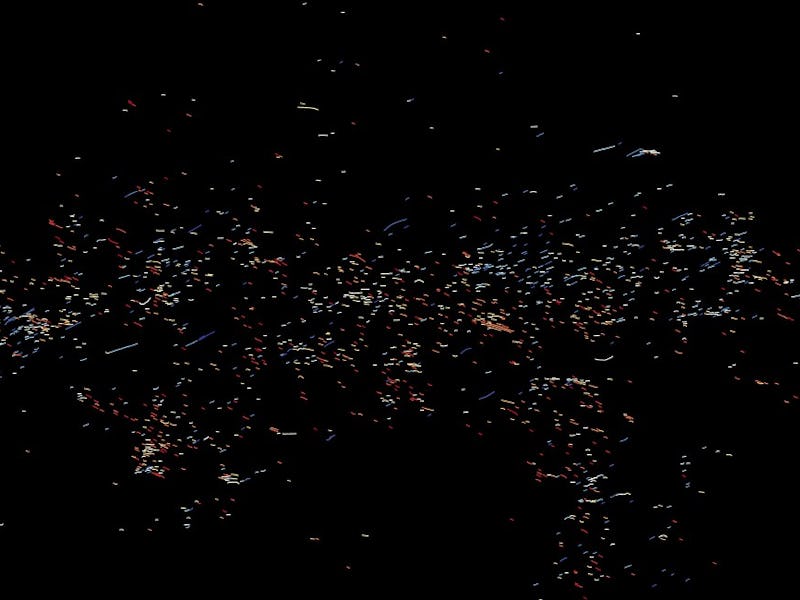Shocking Threads of Gas Could Transform Our Understanding of a Supermassive Black Hole
“I was actually stunned when I saw these.”

Astrophysicists have stumbled upon a strange sight in the center of our galaxy: hundreds of horizontal threads of hot gas hanging out near Sagittarius A*, the Milky Way’s central supermassive black hole that’s located roughly 26,000 light-years away from Earth.
These one-dimensional filaments lie parallel to the galactic plane that surrounds the black hole, according to a new study published in The Astrophysical Journal Letters.
In the 1980s, Northwestern University astrophysicist Farhad Yusef-Zadeh discovered similar filaments arranged vertically, meaning they were aligned with the galaxy’s magnetic field. These measured up to 150 light-years tall and were likely made of high-energy electrons. Last year, his team revealed they had found nearly 1,000 of these vertical filaments, which showed up in pairs and clusters.
Two views of Sagittarius A* and its surroundings from NASA data.
But when parsing through data from the MeerKAT radio telescope in South Africa, Yusef-Zadeh and his colleagues encountered a shocking revelation.
“It was a surprise to suddenly find a new population of structures that seem to be pointing in the direction of the black hole,” Yusef-Zadeh said in a press release. “I was actually stunned when I saw these. We had to do a lot of work to establish that we weren’t fooling ourselves.”
The newly discovered threads measure just 5 to 10 light-years long, sit on just one side of the black hole, and seem to point to Sagittarius A*. They may be about 6 million years old, the team estimates and could have formed when a jet erupted from Sagittarius A* and stretched surrounding gas into these odd threads.
This revelation, along with other newer discoveries, wouldn’t have been possible without recent advances in radio astronomy technology, according to Yusef-Zadeh. He and his colleagues relied on a technique that allowed them to remove the background and smooth out noise from MeerKAT images, offering a clear view of the filaments.
“The new MeerKAT observations have been a game changer,” he said. “The advancement of technology and dedicated observing time have given us new information. It’s really a technical achievement from radio astronomers.”
All in all, these new findings from Yusef-Zadeh’s team could teach us more about the mysterious black hole and its inner workings. “By studying them, we could learn more about the black hole’s spin and accretion disk orientation,” he said. “It is satisfying when one finds order in a middle of a chaotic field of the nucleus of our galaxy.”